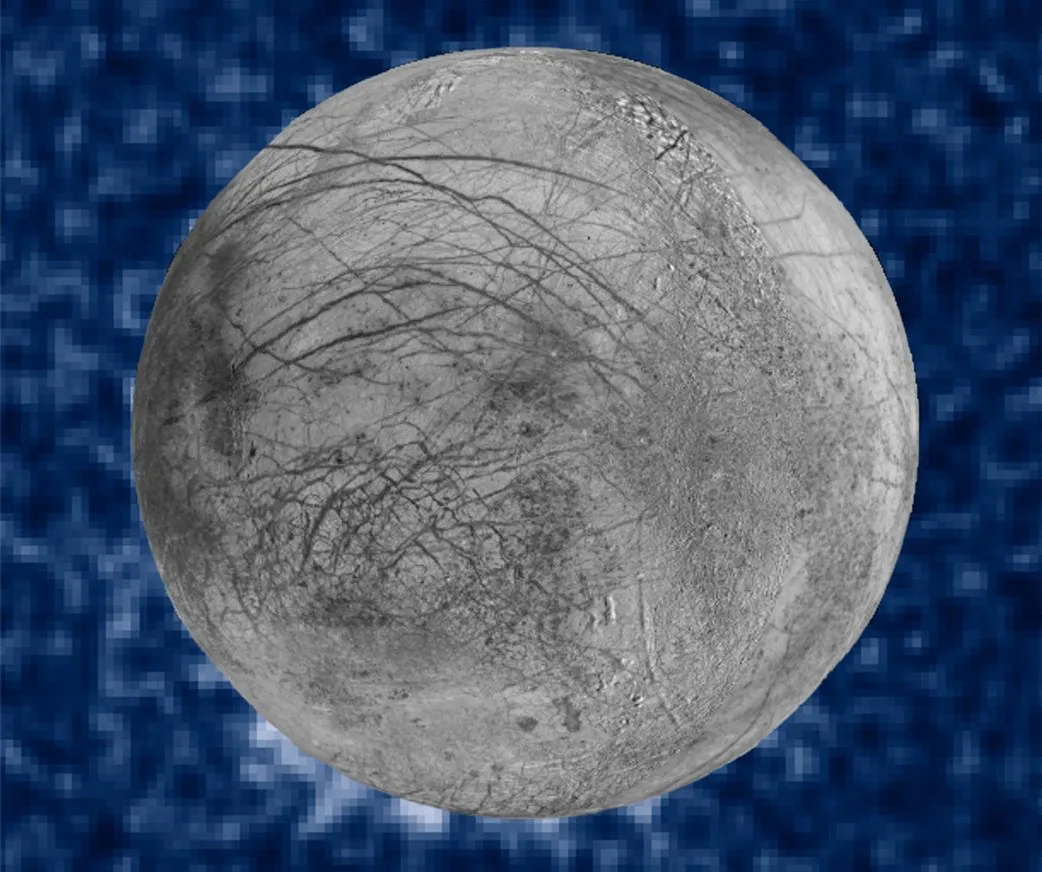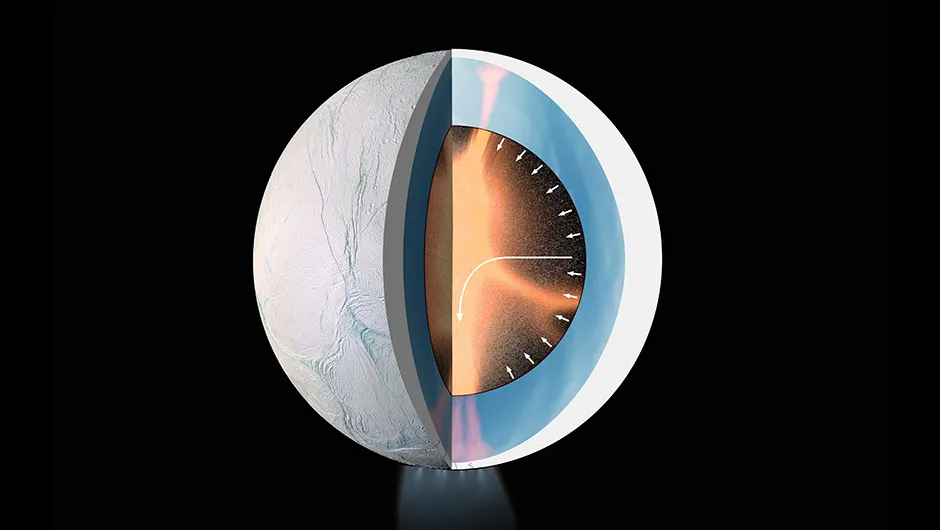The search for life elsewhere in the Universe takes many forms, from searching for signs of biology – or even technology – at distant exoplanets, to listening out for signals in deep space that might come from an intelligent species.
But what about life elsewhere in our own Solar System?
More about life beyond Earth

Astrobiologists and planetary scientists say some of the best places to look for alien life within our Solar System are the icy moons around Jupiter and Saturn.

Credits: NASA/ESA/W. Sparks (STScI)/USGS Astrogeology Science Center
Moons like Europa at Jupiter and Enceladus at Saturn have liquid oceans beneath their frozen crusts, making them potentially habitable worlds.
We spoke to Bonnie Buratti, a NASA scientist, to find out more about the search for life on these frozen moons, and why Europa is one of the most promising places to look for life.

How do you search for alien life?
I serve as the deputy project scientist of Europa Clipper, a NASA flagship mission to explore one of Jupiter’s moons, Europa.
We’re almost certain it has a subsurface ocean and we’re trying to determine whether life could be sustained in that ocean.
We’re not a life-detection mission; that’s a little too sophisticated. We’re just looking for a habitable environment.

What will you be looking for?
There are three necessities for life as we know it: liquid water, energy and food.
The building blocks of life as we know it are carbon, hydrogen, oxygen and nitrogen.
We’re going to be looking for minerals that have those types of chemicals in them and mapping them on the surface.

Why are you looking on Europa?
We’re fairly certain that Europa has a subsurface ocean, and ground-based observations have also found evaporate deposits on its surface – things like magnesium salts and carbon dioxide.
It’s very complex chemically.
The current idea is that life developed on Earth in the deep oceans where thermal vents, so-called smokers or oceanic vents, seem to have developed primitive bacteria.
We think there might be a similar environment on Europa.
Ocean worlds may be fairly common in our Solar System. This is the first one we’re exploring in detail.
Now that we’ve discovered so many planets around other stars, it opens up a whole new area to look for habitable environments.

What might a mission to search for life on Europa look like?
We know so little about this. We don’t even really understand how life arose on Earth.
On Europa, you have to get through a crust that’s about 15 to 20 kilometres thick.
We’re not sure how deep it is; that’s one of the things we have to find out.
We have an ice-penetrating radar to see if there are any ponds under the surface.

To understand the problem, look at Antarctica where there are subglacial oceans like Lake Vostok.
We barely have the technology to get down there here on Earth, when we don’t have to deal with the strong magnetic field of Jupiter and trying to get miniature instruments on spacecraft.
Right now, we really don’t have the technology to look into subsurface oceans in the outer Solar System.

Do you think there is life out there in the Solar System?
You only have scientific opinions based on the evidence and right now, we don’t have any evidence.
We’re just looking for an environment in which life could thrive or even exist.
Bonnie Buratti is a JPL fellow and a senior research scientist and deputy project scientist of Europa Clipper

